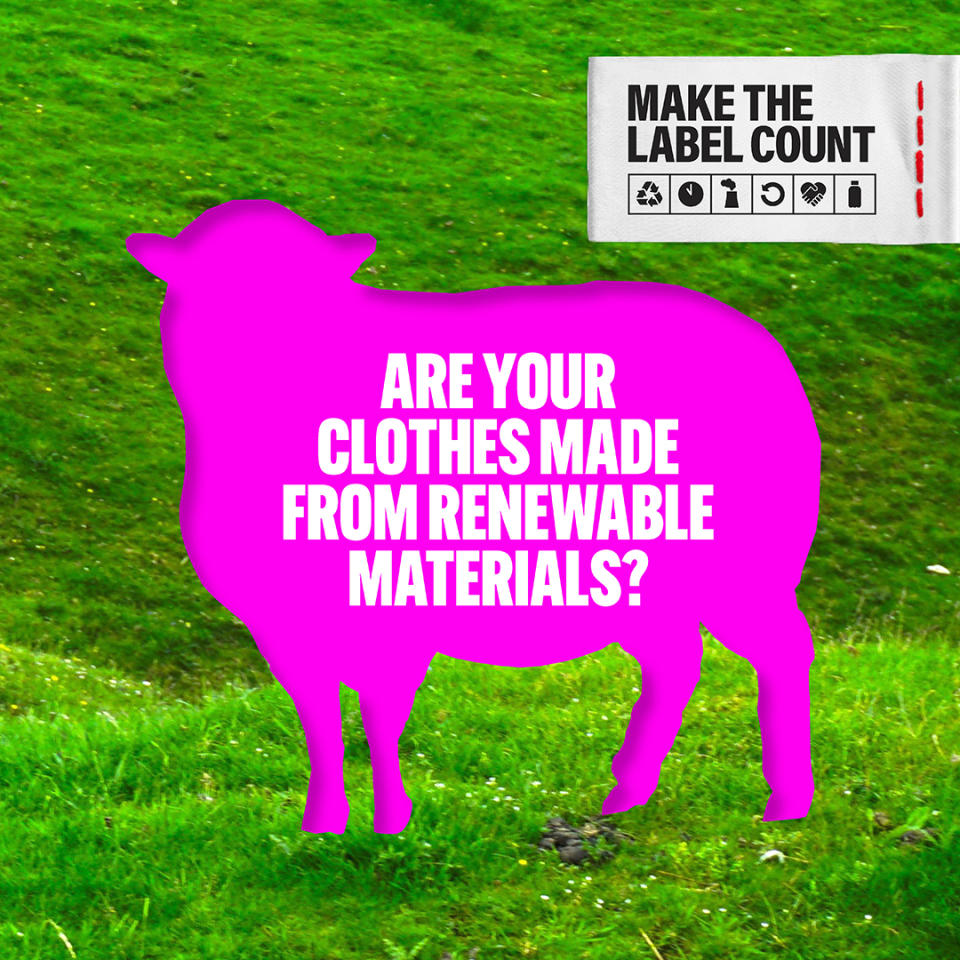By 2023, Clothes in EU Need Eco Label, Campaigners Worry It’s ‘Incomplete’ at Present

By 2023, all clothing sold in the European Union will have to bear an eco label — but the nature of this label is still being decided.
With the EU’s shift to becoming a climate-neutral and circular economy in line with its Green Deal agenda, product labels are getting a unified makeover to help consumers sort through sustainability information with ease.
More from WWD
“Make the Label Count,” a new campaign launched Wednesday, argues the EU’s product environmental footprint methodology, which will underpin the consumer-facing clothing and footwear label is “incomplete” in its current form.
The coalition — which includes the Changing Markets Foundation, Australia Wool Innovation Ltd., the International Sericultural Commission, Cotton Australia and Fibershed, among other supporters — argues the PEF does not account for a garment’s renewability, biodegradability, recyclability, social impact or the full impact of fossil fuels and microplastics.
Under the current methodology, they say the PEF leads synthetics to rank better than natural fibers, creating distortions in the environmental impact of clothes on the market while becoming “misleading” to “well-intentioned consumers.” Currently, the methodology can cover 14 impact categories including climate change, ozone depletion, toxicity (cancer-causing effects) and resource depletion (water use and fossil fuel).
These discussions are years in the making, with much of the strife bubbling up between natural fiber and synthetic fiber enthusiasts over product tools developed by the Higg Index (the technology spinoff from the Sustainable Apparel Coalition).
The SAC plays a leading role in the development around the eco label. With its perspective representing a critical mass — or at least 50 percent of the industry — the EU Commission named the Sustainable Apparel Coalition the leading secretariat for the apparel and footwear industry.
Two years ago, the SAC pieced together its Policy Hub with forces like the Global Fashion Agenda, European Sporting Goods Industry (FESI), Textile Exchange and Zero Discharge of Hazardous Chemicals Program (ZDHC) whose collective goal, it said, is to “enable the industry to speak with one voice as it informs the development of regulation” like the eco label.

Courtesy
Within that, brands like H&M, C&A, Inditex, Decathlon, VF Corp., Nike and Lacoste; trade organizations such as Cotton Inc., the Fédération de la Haute Couture et de la Mode, the French Agency for Ecological Transition (ADEME), the International Wool Textile Organization (the IWTO is also a founding member of Make the Label Count), Refashion, The European Confederation of Flax and Hemp (CELC), and textile and chemical makers like Gore-Tex maker W.L. Gore and Associates and Sympatex have voting power on the direction of the labels.
“We’ve had major advancements in research and knowledge around the environmental impacts of the textile industry, but these aren’t included in the current methodology,” contended Dalena White, Make the Label Count co-spokesperson and secretary general of the IWTO.
Chasing simplified and cost-effective labeling means the European Commission finds it “preferable to work with industry” to co-develop “the right tailored approach.” “After this pilot, the commission will discuss together with all stakeholders and decide if and how we can integrate elements of the [environmental footprint] methods into existing tools like Ecodesign or the EU Ecolabel,” per the FAQ on its website.
Some believe the industry isn’t up to the collective task.
In the first report of a series with eco-consultancy Eco-Age (which counts clients like The Woolmark Company) and The Geneva Center for Business and Human Rights, published last month and titled “The Great Greenwashing Machine,” independent analyst Veronica Bates Kassatly and The Geneva Center’s director Dorothée Baumann-Pauly contend that fashion brands, by and large, “are failing in their efforts because they are using a flawed definition of sustainability, unscientific methods and selective implementation.”
Make the Label Count is calling for the commission, which first began work on the PEF in 2013, to ensure the labels include microplastics, among other hot-button issues. Progress updates from the commission are expected in early 2022, according to member stakeholders.
Sign up for WWD's Newsletter. For the latest news, follow us on Twitter, Facebook, and Instagram.

